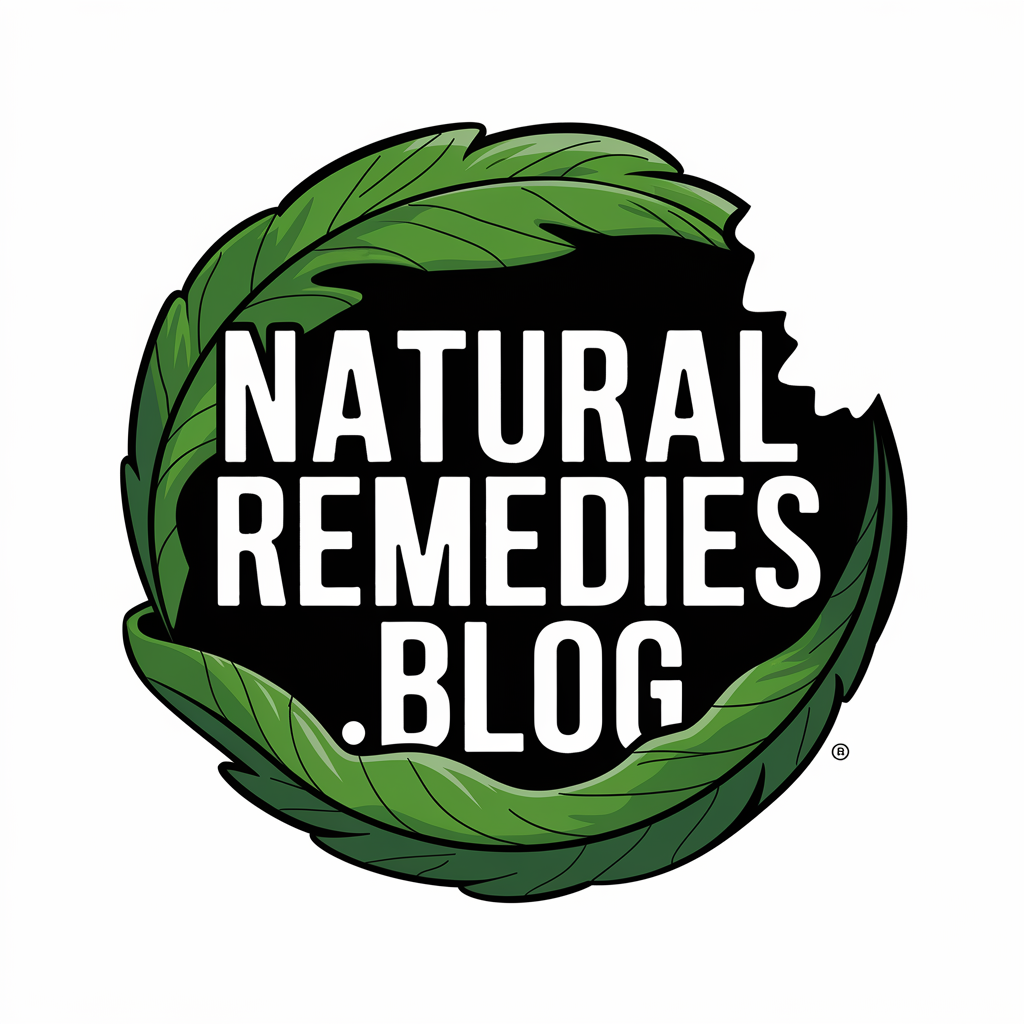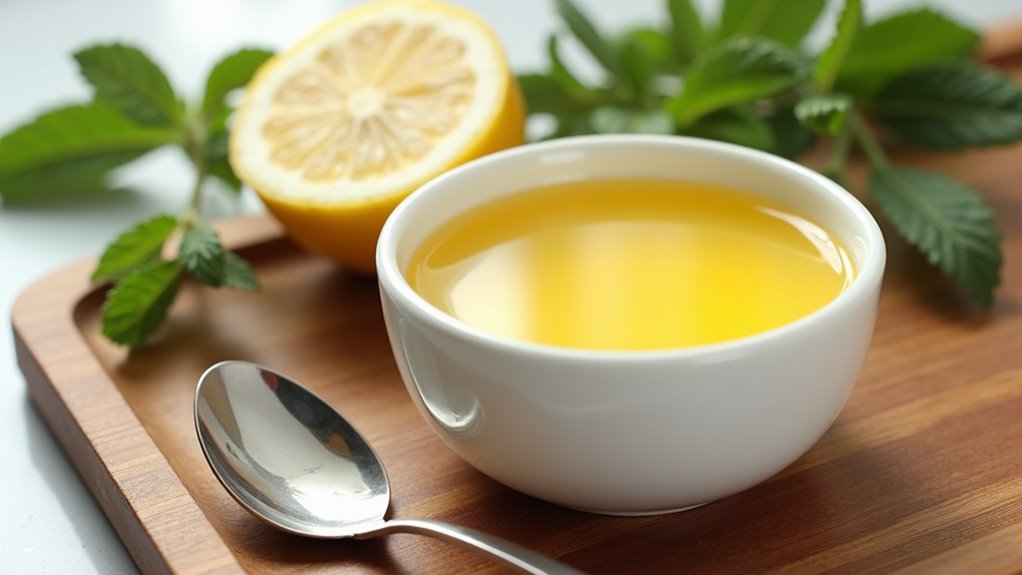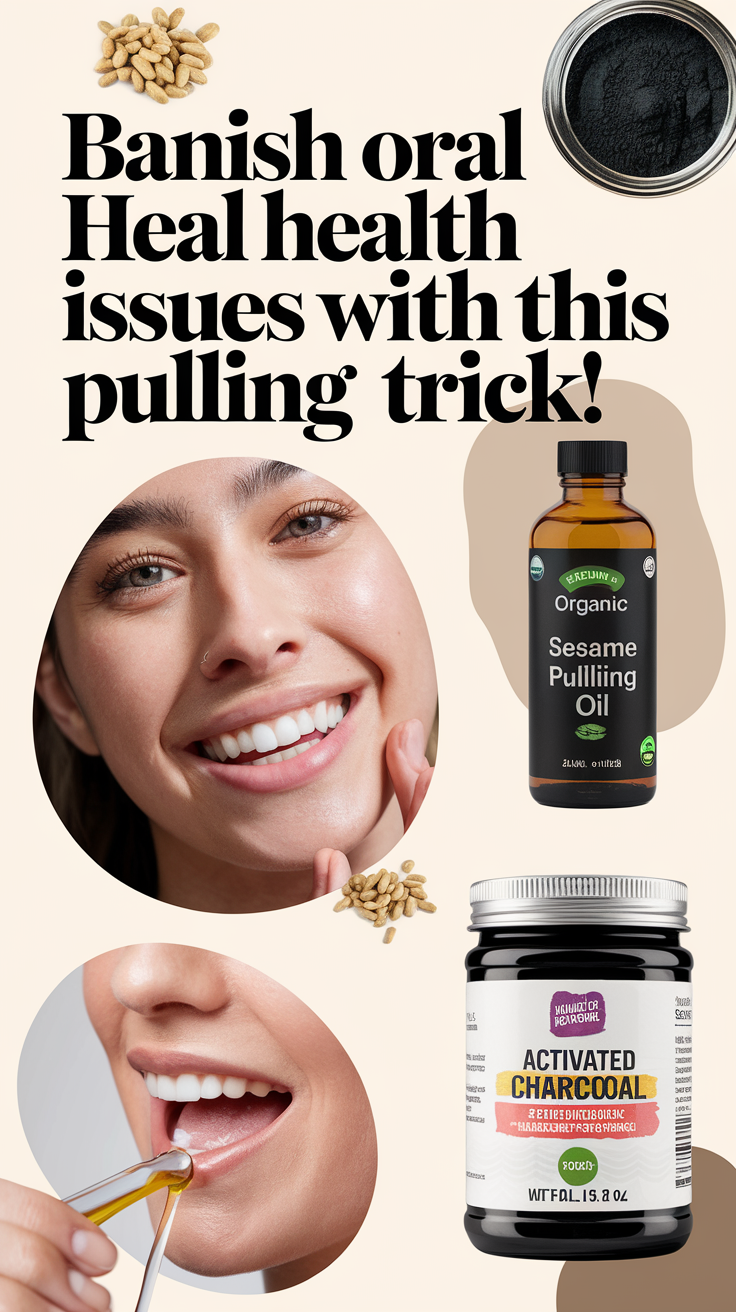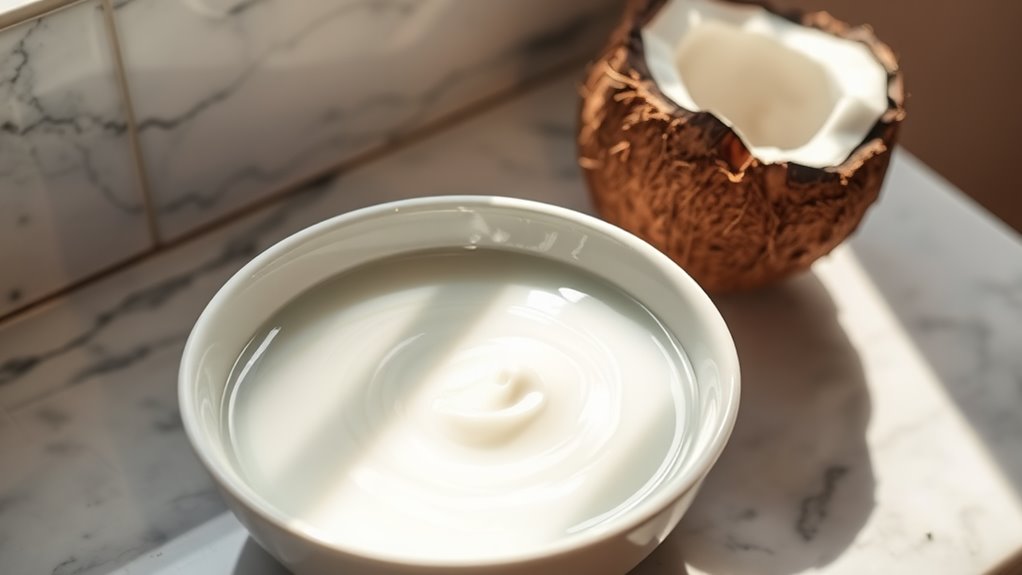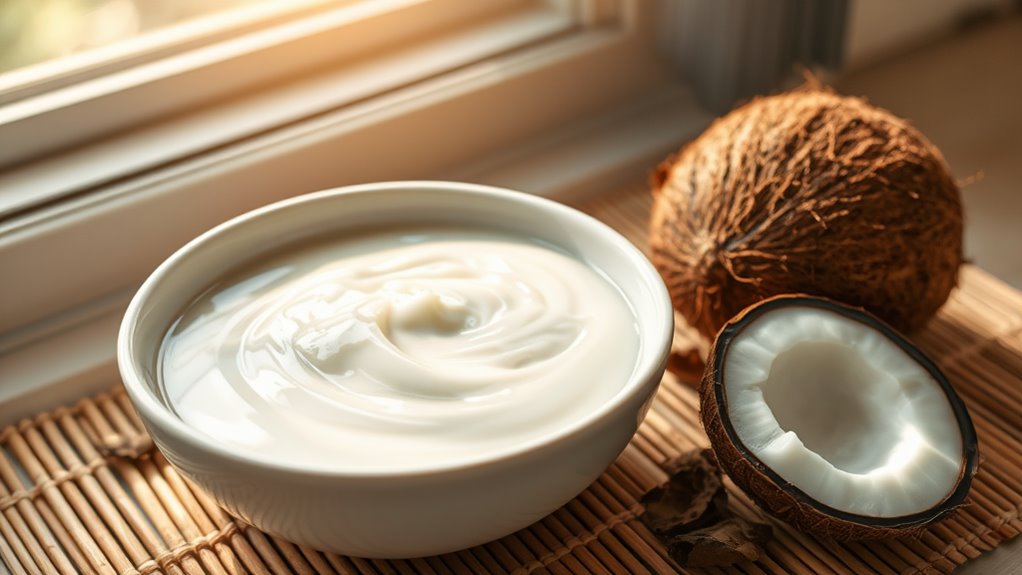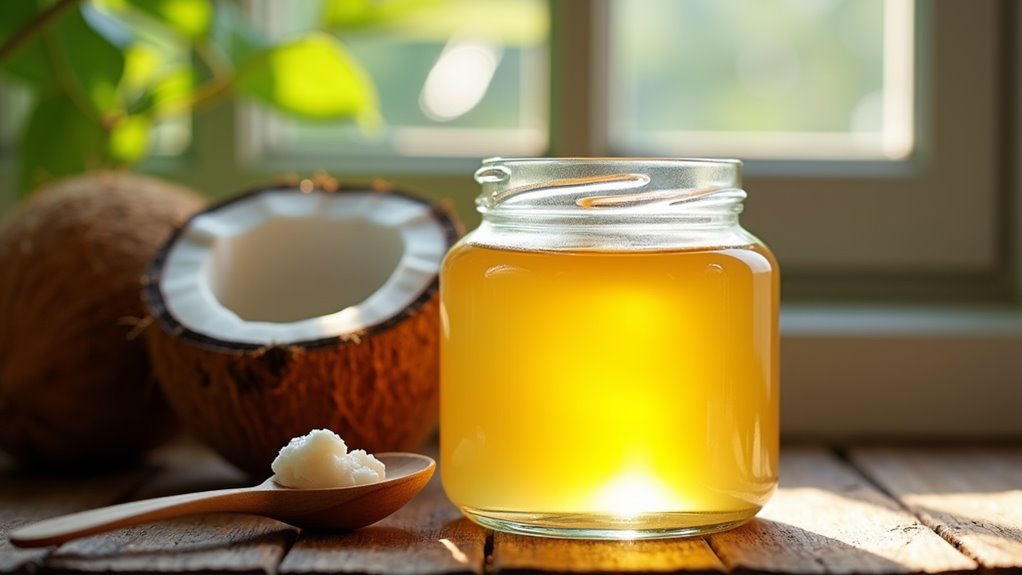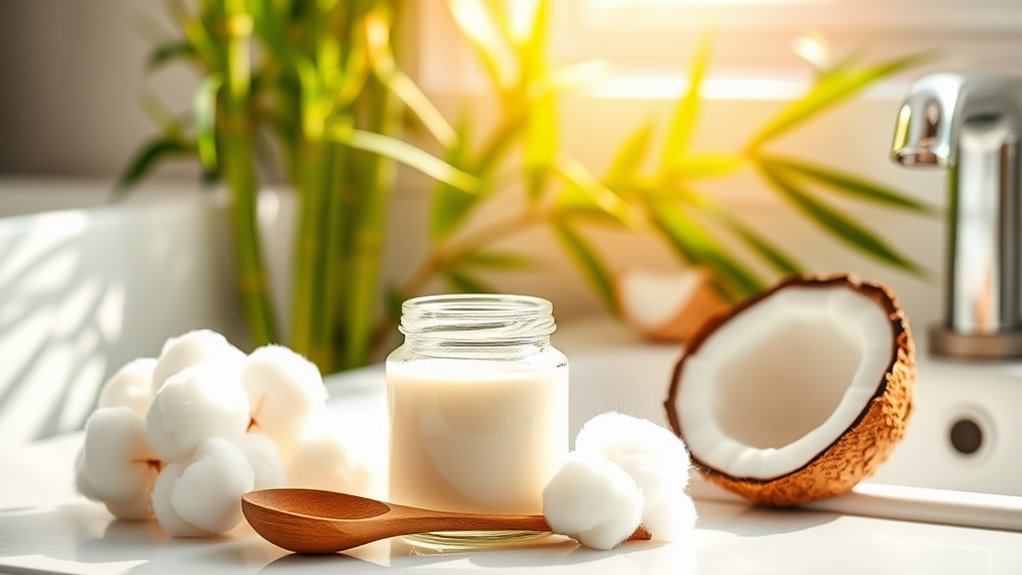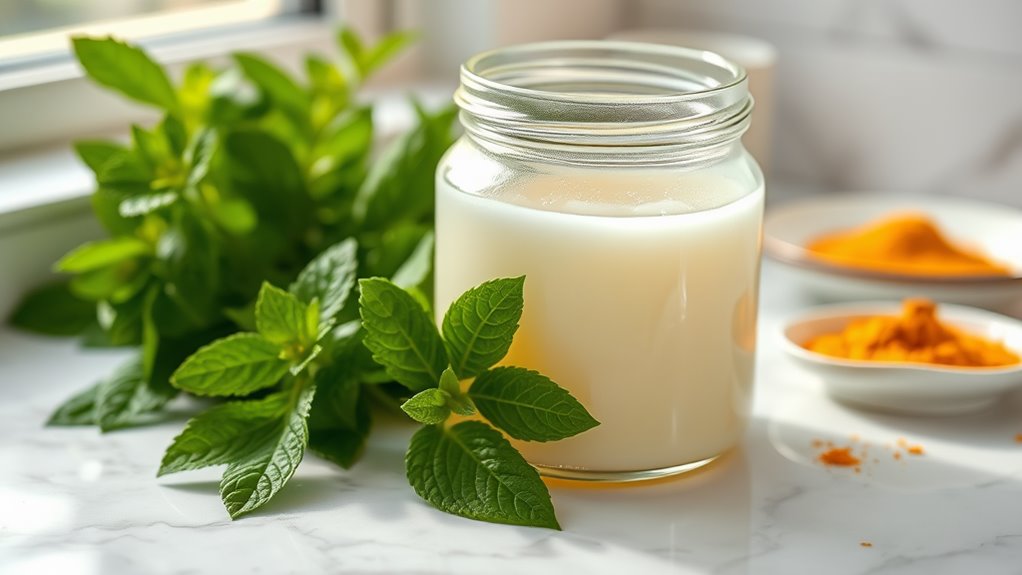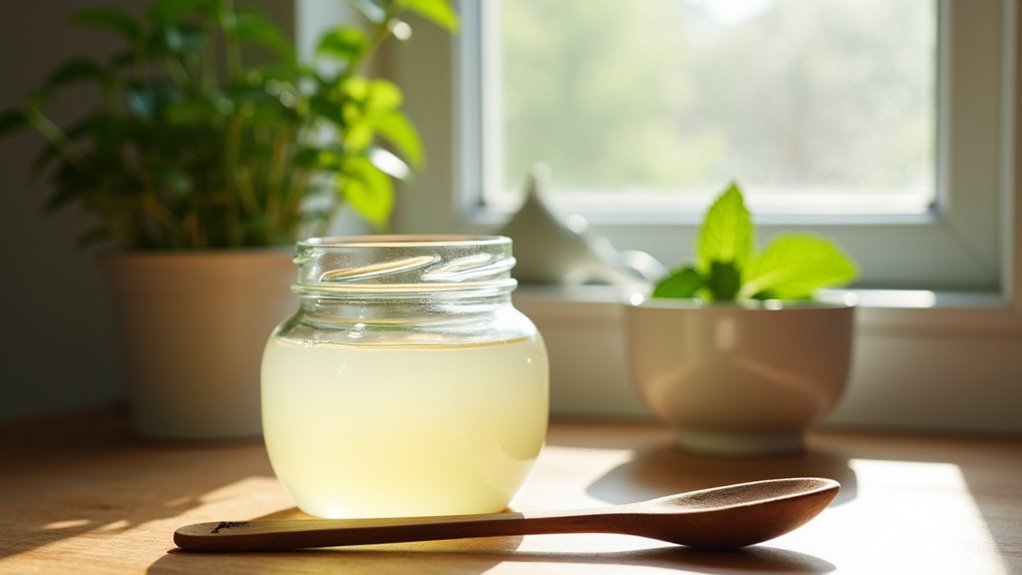Banish Oral Health Issues With This Oil Pulling Trick!
You can transform your oral health with oil pulling, an ancient Ayurvedic practice that’s gaining modern scientific support. Simply swish a tablespoon of coconut oil in your mouth for 15-20 minutes each morning to reduce harmful bacteria, fight plaque, and promote healthier gums. This natural technique helps whiten teeth, freshen breath, and may even prevent cavities. Discover how this simple morning ritual can revolutionize your dental care routine.
Key Takeaways
-
Swish coconut oil in your mouth for 15-20 minutes each morning to reduce harmful bacteria and promote healthier teeth and gums.
-
Oil pulling creates a soap-like substance that removes plaque, bacteria, and toxins while preventing tooth decay and gingivitis.
-
Regular oil pulling practice leads to whiter teeth, fresher breath, and reduced tooth sensitivity within a few weeks.
-
Use organic, cold-pressed coconut oil for best results due to its antimicrobial properties and high lauric acid content.
-
Combine oil pulling with proper oral hygiene practices and follow with warm water rinse and regular brushing.
Understanding the Ancient Practice of Oil Pulling
Although oil pulling dates back thousands of years in Ayurvedic medicine, this practice has recently gained popularity in Western wellness communities.
You’ll join a growing community of health-conscious individuals who’ve discovered this natural method for maintaining oral hygiene. The technique involves gently swishing oil in your mouth for 15-20 minutes before spitting it out.
While traditional practitioners used sesame oil, oil pulling with coconut oil has become the modern favorite due to its pleasant taste and antimicrobial properties.
You’ll want to perform this ritual first thing in the morning, before eating or drinking anything. As you incorporate this practice into your daily routine, you’re not just following a trend – you’re participating in an ancient tradition that’s stood the test of time.
The Science Behind Oil Pulling’s Effectiveness
While scientific research on oil pulling is still emerging, several studies have demonstrated its effectiveness in reducing harmful bacteria and promoting oral health.
The process works through the mechanical action of swishing oil, which creates a saponification effect – turning the oil into a soap-like substance that pulls bacteria from your teeth and gums.
You’ll be interested to know that coconut oil, a popular choice for oil pulling, contains lauric acid that’s proven to have antimicrobial properties.
When you practice oil pulling regularly, you’re joining countless others who’ve discovered how this natural method helps reduce plaque formation, fight gingivitis, and freshen breath.
Research has shown that oil pulling can decrease the Streptococcus mutans count in your mouth, the primary bacteria responsible for tooth decay.
Why Coconut Oil Is the Top Choice
Among all oils used for oil pulling, coconut oil stands out as the most effective and popular choice.
It’s rich in lauric acid, a natural antimicrobial compound that fights harmful bacteria, fungi, and viruses in your mouth. You’ll love that coconut oil has a mild, pleasant taste compared to other oils, making your daily oil pulling routine more enjoyable.
What makes coconut oil truly special is its unique molecular structure. At room temperature, it’s solid, but it quickly melts in your mouth, making it easier to swish.
The medium-chain fatty acids in coconut oil penetrate dental plaque more effectively than other oils, helping you achieve a deeper clean. Plus, it’s readily available, affordable, and packed with vitamin E, which promotes healthy gums and reduces inflammation.
Step-by-Step Guide to Oil Pulling
Following these six simple steps will help you master the art of oil pulling.
First, measure one tablespoon of coconut oil and place it in your mouth.
Second, let the oil melt completely before you begin swishing.
Third, gently swish the oil around your mouth for 15-20 minutes, making sure it reaches between your teeth and under your tongue.
Fourth, avoid swallowing any oil – it contains toxins you’re pulling from your mouth.
Fifth, spit the oil into a trash can, not your sink, as it can clog pipes when it solidifies.
Finally, rinse your mouth thoroughly with warm water and brush your teeth as usual.
For best results, practice oil pulling first thing in the morning, before eating or drinking anything.
Optimal Timing and Frequency
Now that you know the proper technique, establishing the right schedule for oil pulling can maximize its benefits.
For best results, practice oil pulling first thing in the morning on an empty stomach, before brushing your teeth or drinking water. This allows the oil to target harmful bacteria that have accumulated overnight.
Begin with just 5 minutes daily as you build tolerance, then gradually work up to 15-20 minutes per session.
Most practitioners recommend oil pulling at least 3-4 times per week, though daily practice offers the most profound benefits. You’ll join countless others who’ve made this ancient practice part of their morning ritual.
Remember to stay consistent with your chosen schedule – your oral health journey is a marathon, not a sprint.
Common Mistakes to Avoid
While oil pulling offers numerous benefits, beginners often make mistakes that can reduce its effectiveness.
Don’t use cold oil, as it’s harder to swish and may cause jaw discomfort. Instead, warm the oil slightly to room temperature before use.
You’ll want to avoid swallowing the oil during the process, as it contains toxins pulled from your mouth. If you’re feeling the urge to swallow, you’re probably using too much oil – stick to just one tablespoon.
Also, don’t spit the used oil into your sink or toilet, as it can clog your pipes. Instead, dispose of it in the trash.
Remember not to brush your teeth immediately before oil pulling, and don’t skip your regular oral hygiene routine afterward.
These simple adjustments will help you get the most from your practice.
Benefits for Dental Hygiene
Oil pulling’s benefits for dental hygiene are both extensive and scientifically supported. You’ll notice a reduction in harmful bacteria that cause plaque, gingivitis, and bad breath.
Like many others who’ve adopted this practice, you can expect whiter teeth and healthier gums within weeks of consistent use. This ancient technique helps remove toxins from your mouth while stimulating saliva production, which naturally cleanses your oral cavity.
You’re joining thousands who’ve experienced decreased tooth sensitivity and cavity prevention through oil pulling’s ability to create a protective barrier around teeth and gums. The antimicrobial properties of coconut or sesame oil also help combat periodontal disease, making you part of a growing community that’s discovering natural alternatives to conventional oral care methods.
Fighting Bad Breath Naturally
Bad breath can be a persistent and embarrassing problem, but oil pulling offers a natural solution that addresses the root causes. You’ll love how this ancient practice eliminates the bacteria responsible for unpleasant odors while promoting fresh breath naturally.
| Time of Day | Oil Type | Benefits |
|---|---|---|
| Morning | Coconut | Kills bacteria |
| Afternoon | Sesame | Neutralizes odors |
| Evening | Sunflower | Freshens breath |
| Before Bed | Olive | Reduces plaque |
When you make oil pulling part of your daily routine, you’re joining countless others who’ve discovered this effective method for combating bad breath. The practice works by drawing out toxins and harmful organisms that conventional mouthwash might miss. You’ll notice fresher breath within days, and your confidence will soar as you interact with others without worrying about oral odors.
Reducing Plaque and Gingivitis
Beyond freshening breath, the ancient practice of oil pulling stands out as a powerful defender against plaque buildup and gingivitis. When you swish coconut or sesame oil around your mouth, you’re actually creating a protective barrier that prevents harmful bacteria from sticking to your teeth and gums.
Research shows that oil pulling can reduce plaque formation by up to 50% when practiced consistently. You’ll notice less inflammation in your gums and a significant decrease in bleeding during brushing.
Many members of our natural health community report that their dentists are amazed by the improvement in their oral health after just a few weeks of oil pulling. By incorporating this practice into your morning routine, you’ll join countless others who’ve discovered this effective, chemical-free approach to dental care.
Supporting Tooth Enamel Health
When it comes to protecting your tooth enamel, regular oil pulling offers a natural shield against demineralization.
The oils used in this ancient practice, especially coconut oil, create a protective barrier that helps prevent acid erosion and maintains your enamel’s mineral balance. You’ll join countless others who’ve discovered how this gentle method preserves their smile’s natural defense system.
The lauric acid in coconut oil works with your saliva to maintain ideal pH levels around your teeth.
Balancing Oral Microbiome
The oral microbiome plays a key role in maintaining your overall dental health, working alongside strong tooth enamel to create ideal conditions in your mouth. When you practice oil pulling, you’ll help maintain a balanced oral ecosystem that supports beneficial bacteria while reducing harmful microorganisms.
| Beneficial Effects | Harmful Conditions |
|---|---|
| Healthy pH levels | Acidic environment |
| Good bacteria growth | Bacterial overgrowth |
| Natural defense system | Weakened immunity |
| Balanced flora | Dysbiosis |
Your daily oil pulling routine helps create an environment where beneficial bacteria can thrive. The practice naturally draws out toxins and supports your mouth’s delicate bacterial balance. By maintaining this equilibrium, you’re protecting yourself against common oral health issues and creating a prime environment for your natural oral microbiome to flourish.
Incorporating Oil Pulling Into Your Morning Routine
Making oil pulling a consistent part of your morning routine doesn’t have to be complicated. Start by placing your oil of choice (coconut, sesame, or olive) on your nightstand so it’s ready for you first thing.
When you wake up, before drinking water or brushing your teeth, put a tablespoon of oil in your mouth and swish it gently for 15-20 minutes.
Use this time to shower, check emails, or prepare breakfast – you’ll be multitasking like a pro. Join thousands of others who’ve made this ancient practice part of their daily wellness ritual.
When you’re done, spit the oil into the trash (not the sink), rinse thoroughly with warm water, and brush your teeth as usual. You’ll soon look forward to this cleansing morning ritual.
What to Expect in the First Week
Starting oil pulling may feel strange during your first week as your mouth adjusts to this new practice.
You’ll likely notice your jaw getting tired after just a few minutes, but don’t worry – this is completely normal.
Many people in our oil pulling community experienced the same thing when they began.
Long-term Results and Maintenance
With consistent practice beyond your first week, long-term oil pulling can lead to noticeable improvements in your oral health.
You’ll likely experience considerably whiter teeth, fresher breath, and healthier gums within the first month. Many oil pullers report reduced tooth sensitivity and fewer cavities during their dental check-ups.
To maintain these benefits, stick to your daily oil pulling routine and combine it with regular brushing and flossing.
Choose a time that works best with your schedule – many people prefer first thing in the morning. Remember to use high-quality organic oils and replace them every few months to guarantee maximum effectiveness.
You might want to switch between coconut, sesame, or sunflower oils to experience their unique benefits while keeping your routine interesting and enjoyable.
Expert Tips for Maximum Benefits
How can you maximize the benefits of your oil pulling practice? Start by joining the growing community of health-conscious individuals who oil pull first thing in the morning, before eating or drinking.
You’ll get better results by using organic, cold-pressed oils like coconut or sesame.
Remember to swish gently for 15-20 minutes – there’s no need to strain your jaw muscles. While you’re pulling, engage in other morning activities like showering or preparing for the day.
Spit the oil into a trash can, not your sink, to prevent clogged pipes. Always rinse thoroughly with warm water and brush your teeth afterward.
For enhanced antimicrobial effects, add a drop of tea tree oil to your pulling oil, as many experienced practitioners do.
Combining Oil Pulling With Other Natural Remedies
Oil pulling works even better when paired with other natural oral care practices.
You’ll love combining it with a homemade tooth powder made from baking soda and activated charcoal, or try adding a few drops of tea tree oil to your pulling routine for extra antimicrobial power.
Start your morning by oil pulling, then rinse with warm salt water to help reduce inflammation and kill harmful bacteria.
You can also boost your oral health by chewing fresh herbs like parsley or mint after pulling – they’re natural breath fresheners and packed with beneficial compounds.
For gum health, massage them with aloe vera gel after your oil pulling session.
Many natural health enthusiasts also swear by adding a probiotic rinse to their routine for a balanced oral microbiome.
Research Studies and Clinical Evidence
Several clinical studies support the traditional practice of oil pulling for improving oral health.
You’ll be encouraged to know that research published in the Journal of Indian Society of Pedodontics and Preventive Dentistry found significant reductions in plaque and gingivitis after just 45 days of oil pulling with coconut oil.
Another study in the Journal of Oral Health and Community Dentistry revealed that oil pulling effectively decreased harmful bacteria in the mouth, matching the results achieved with chlorhexidine mouthwash.
What’s more, research in the Nigerian Medical Journal demonstrated oil pulling’s ability to reduce bad breath by eliminating the microorganisms that cause it.
These findings align with what our ancestors knew – you’re tapping into a time-tested method backed by modern science.
Best Practices for Safe Oil Disposal
While the health benefits of oil pulling are well-documented, proper disposal of the used oil requires careful consideration.
You’ll want to avoid spitting the used oil into your sink or toilet, as this can lead to clogged pipes and expensive plumbing repairs. Instead, spit the oil into a paper cup or tissue, then dispose of it in your regular trash.
If you’re environmentally conscious, you can collect the used oil in a dedicated container and take it to your local recycling center that accepts cooking oil.
Remember to let the oil cool completely before disposal, and never mix it with other household chemicals.
Frequently Asked Questions
Can Pregnant Women Safely Practice Oil Pulling?
You can safely practice oil pulling during pregnancy, but it’s best to check with your doctor first. Be sure you’re using food-grade oil and don’t swallow any during the process.
Is Oil Pulling Safe for Children and at What Age?
You’ll want to wait until your child’s at least 5 years old and can safely swish without swallowing. Start with shorter sessions and always supervise to guarantee they’re doing it correctly.
Does Oil Pulling Affect Existing Dental Work Like Crowns or Fillings?
You’ll be glad to know that oil pulling won’t harm your existing dental work. Your crowns and fillings will stay secure, but it’s always best to check with your dentist first.
Will Oil Pulling Remove Teeth Stains From Coffee and Wine?
While oil pulling can help reduce surface stains, you’ll see better results combining it with other whitening methods. It won’t dramatically remove deep stains from coffee and wine like professional treatments would.
Can I Use Olive Oil or Sesame Oil Instead of Coconut Oil?
You can definitely use sesame or olive oil for oil pulling! Sesame oil’s actually traditional in Ayurvedic practice, while olive oil’s another great option. Both work well, though coconut’s still most popular.
